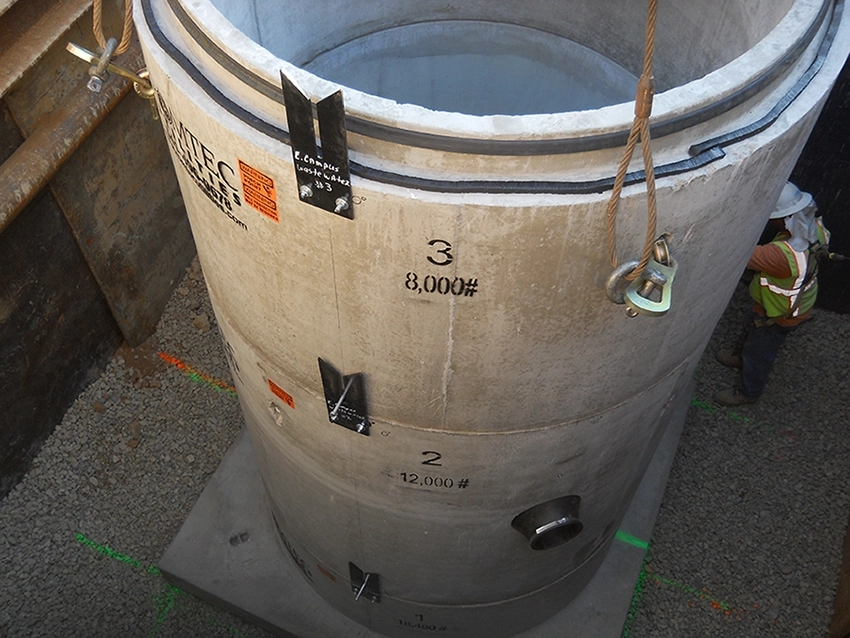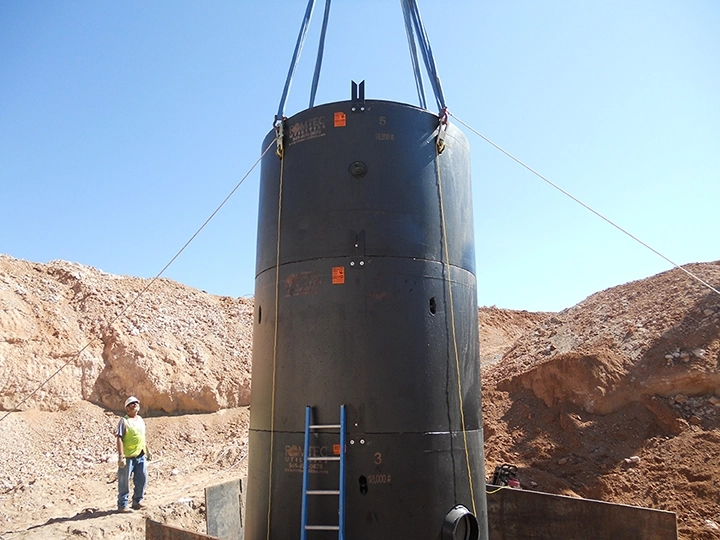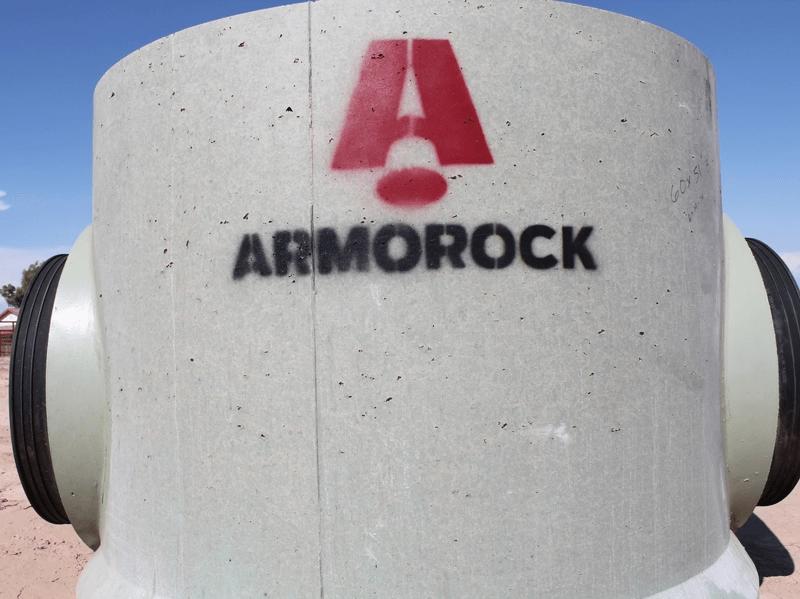
Wet Wells are the primary structural component of most pump stations, and Romtec Utilities designs, manufactures, and supplies wet wells for many different pumping applications. Wells and sumps can be fabricated out of many different types of materials, and some of the most common are concrete, fiberglass, and polymer. Precast and prefabricating wet wells in these materials offers many advantages. Let’s take a look at these common materials to see how each can benefit the functionality of your pump station.

Precast concrete for wet wells and sumps is very common because it can be reliably manufactured in a quick and affordable manner. Precast polymer cement offers the same benefits with the added capabilities of resisting corrosion from many different sources. These components are made by using different types of rebar to reinforce the concrete or polymer components. In engineering terms, this increases the “strength” and “toughness” of a precast component, where “strength” is the ability to resist a given load and “toughness” is the ability to absorb a given impact.
In spite of the structural strength of precast concrete, it can be vulnerable in certain conditions to various chemicals and gasses that can deteriorate the component. Wet Well coatings or liners can be applied in these scenarios to protect the concrete. Applying a coating or liner can be accomplished with many different materials and styles, so it is important to understand the properties and lifespan of each product and to rely on vendors with well documented experience and products. The other option is to get wet well components precast from polymer cement.

With polymer cement wet wells, the sump components can be engineered to have structural qualities equal to concrete. Using polymer cement as the binding agent, however, allows wet well materials to be fabricated with a wide variety of different performance capabilities. This includes the ability to resist corrosion, high temperatures, grit, and other water conditions that can deteriorate standard concrete. Between both precast concrete and precast polymer cement, you can get very reliable wet well structures for your pump station because the casting process improves uniformity and quality control of the final product.
Fiberglass tanks provide many of the same benefits as wet wells fabricated from precast concrete and polymer cement. Fiberglass can also be factory controlled and is not subject to field conditions like cast-in-place concrete. Fiberglass also offers many of the same corrosion resistant properties as polymer cement components. Unlike the precast materials, fiberglass offers more versatility in its installation possibilities. Fiberglass tanks can be installed both vertically and horizontally, expanding its potential uses in a system design. Fiberglass can also be fabricated in ways that are more practical that what precast materials can provide.

Wet wells will need to contain harmful or potentially dangerous liquids in some pumping applications. In these applications, the wet well must never fail, meaning it cannot leak or leach into the environment. Fiberglass can be fabricated with a double wall, and it can be fabricated with leak detection. This provides a wet well with two layers of containment and the ability to notify personnel if the first layer is compromised. Whereas this functionality is possible in other well materials, fiberglass accomplishes it perhaps the best.
Romtec Utilities fabricates wet well out of any material required for each project. Whether the requirement is driven by the design criteria or by specification, we can configure fully functional pump stations with all types of wet well materials. Getting the best wet well involves understanding the needs of your pumping system and finding the materials that best suits those needs. Romtec Utilities can provide advice, documentation, and support for all types of wet well products before your pump station is engineered. Contact Romtec Utilities today to learn more about our pump stations and the materials we can use for structural wet well components.
